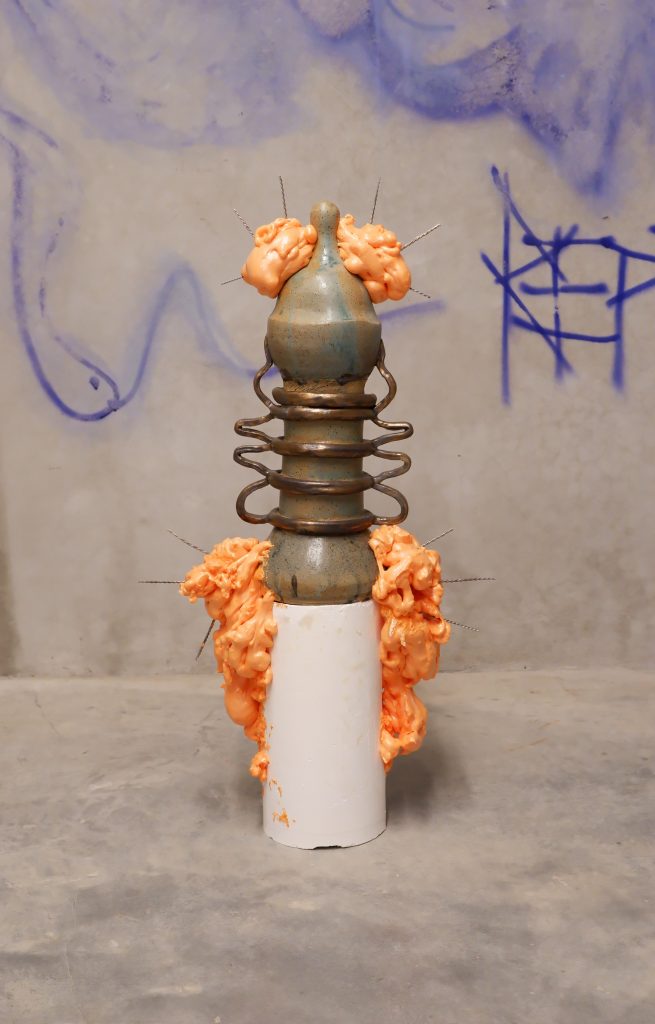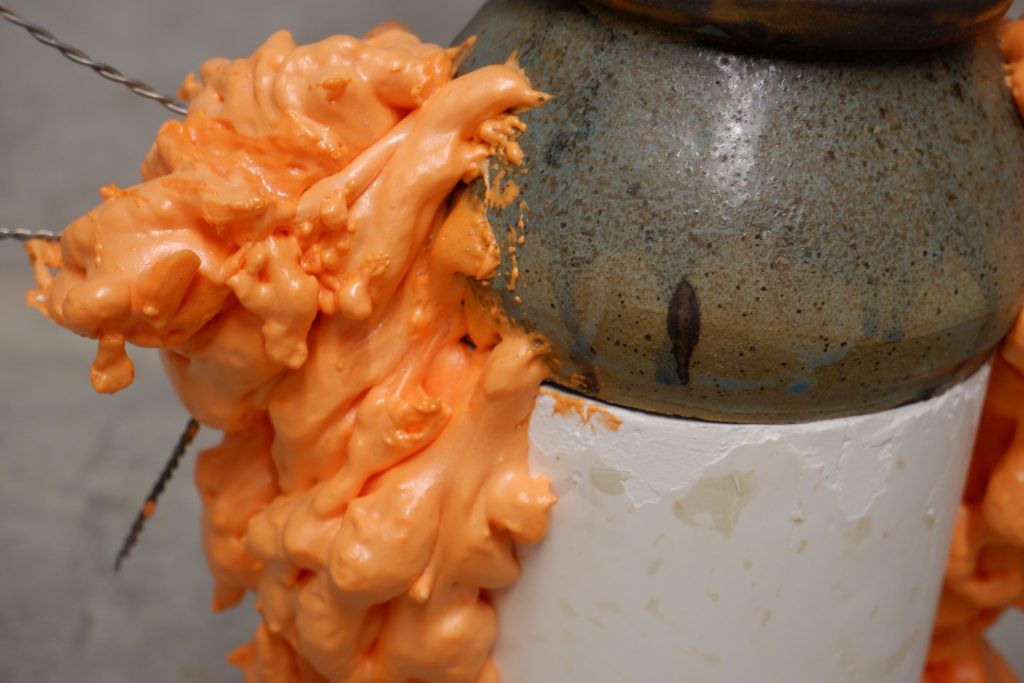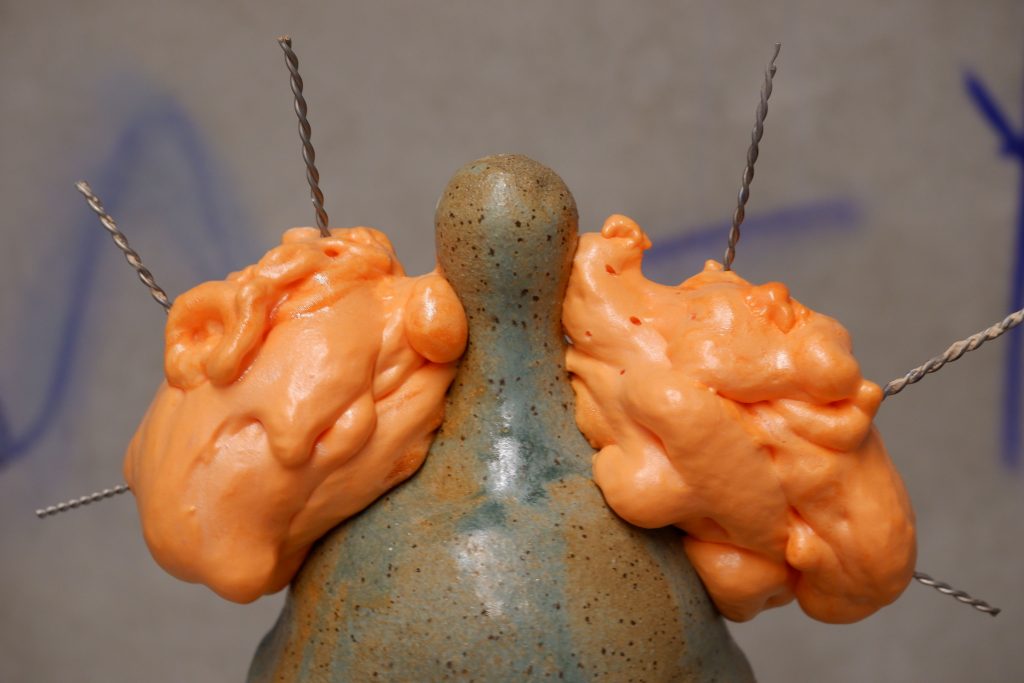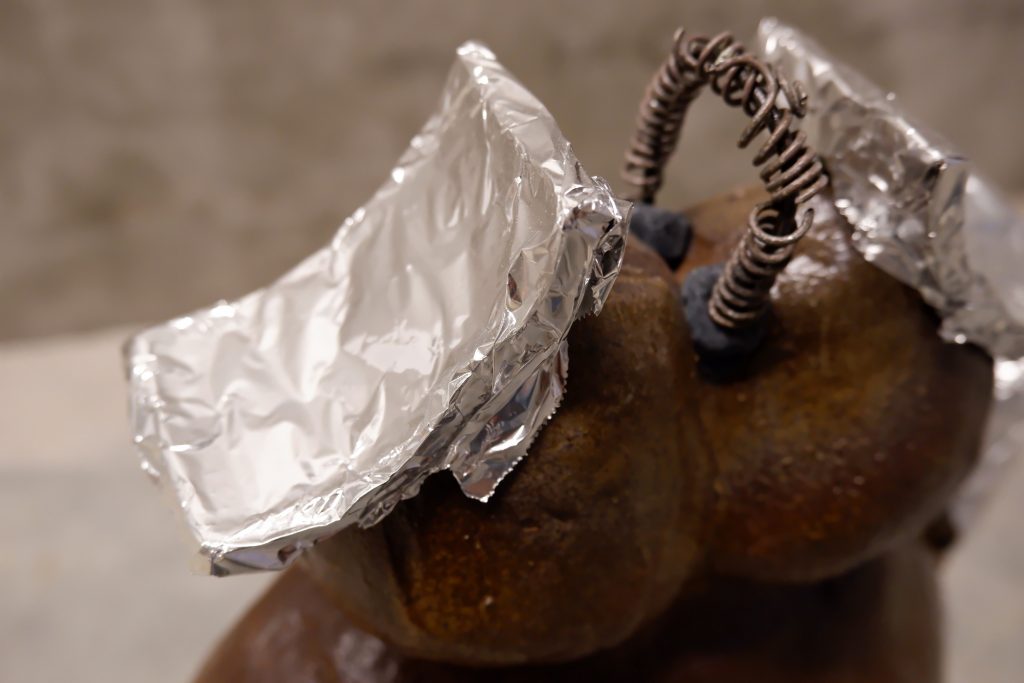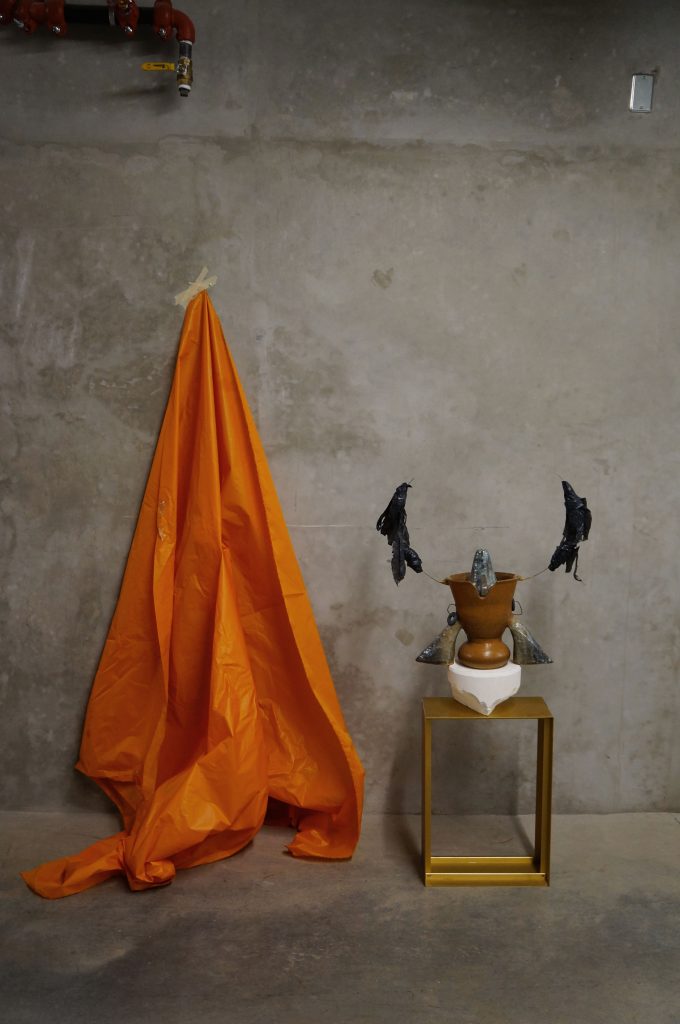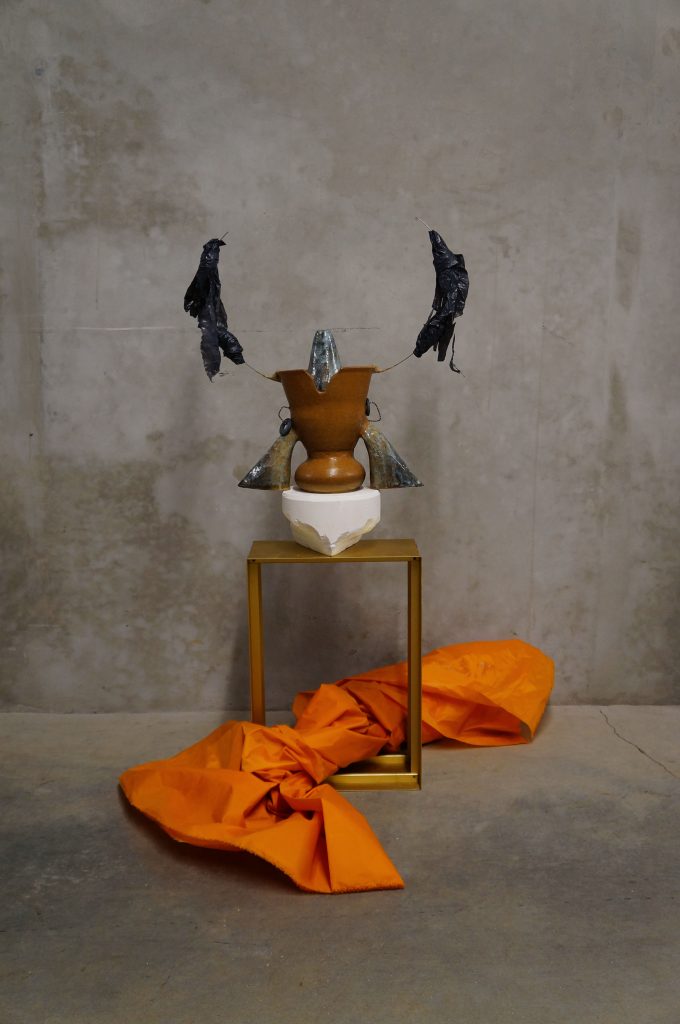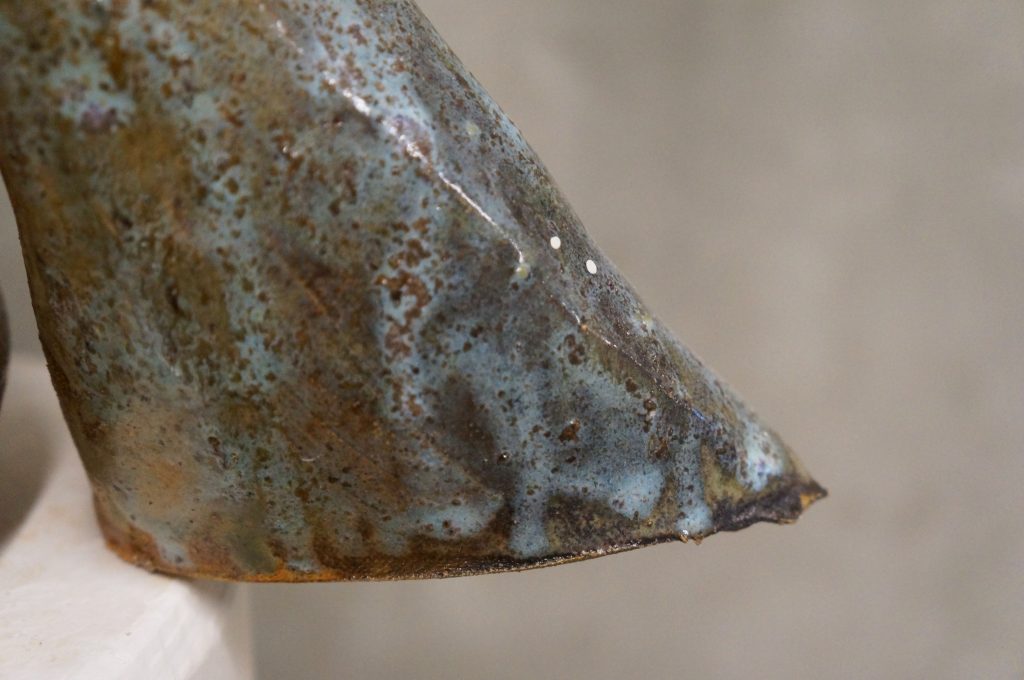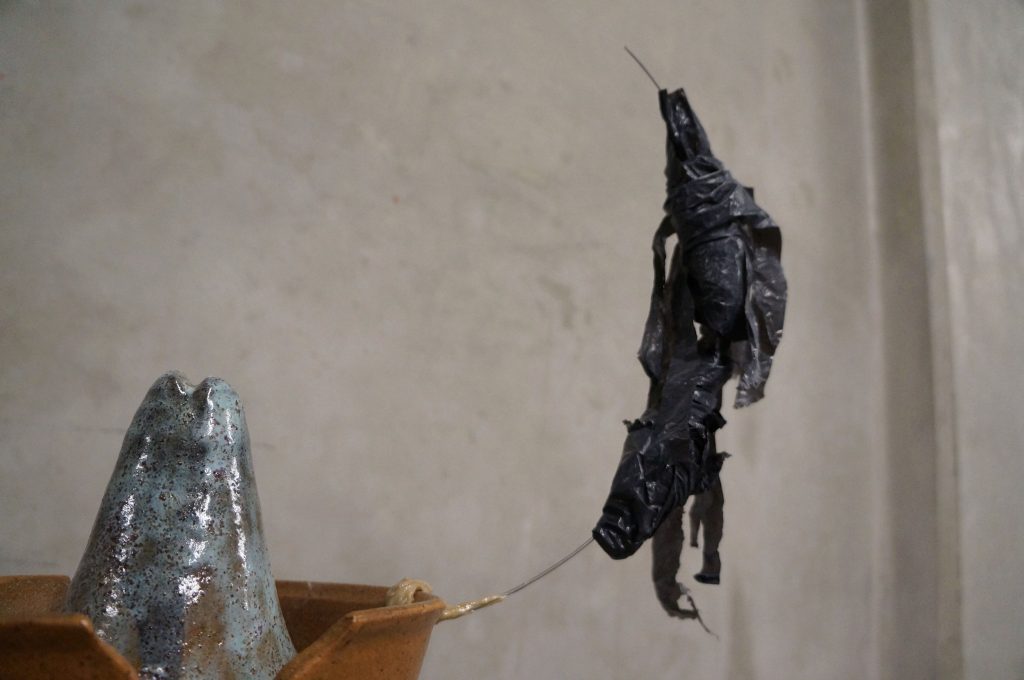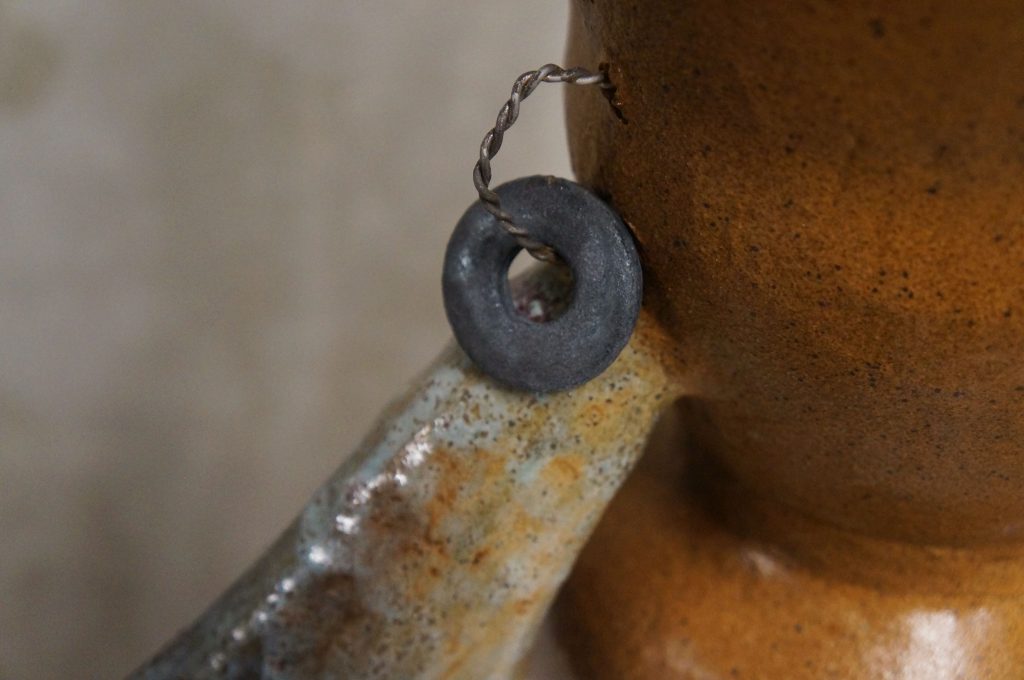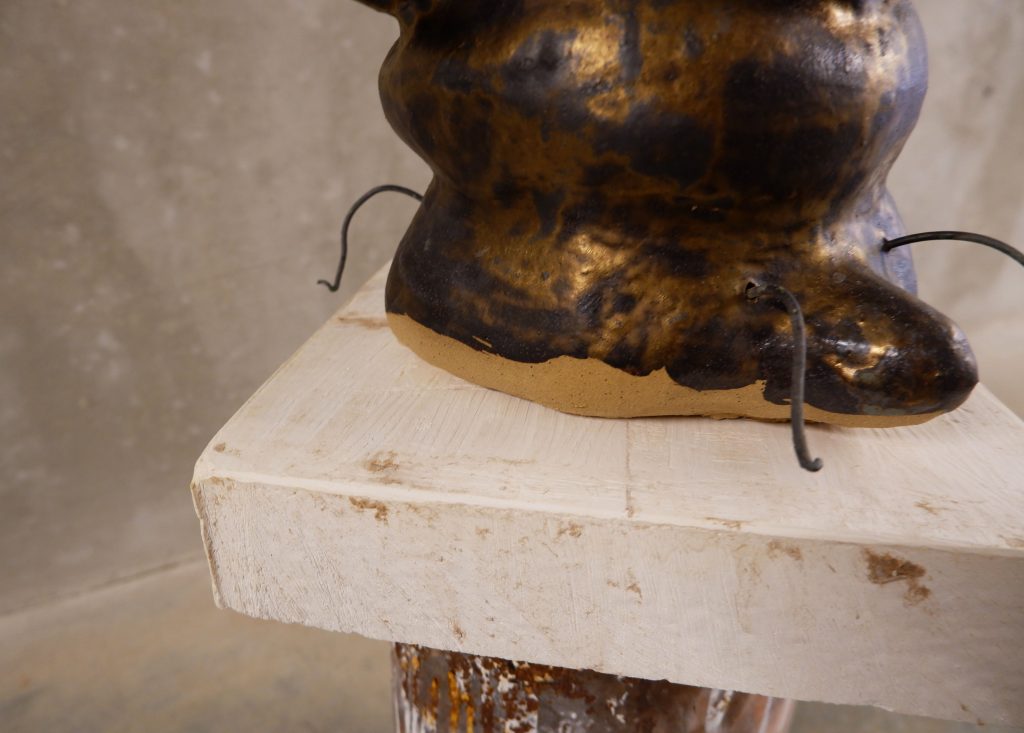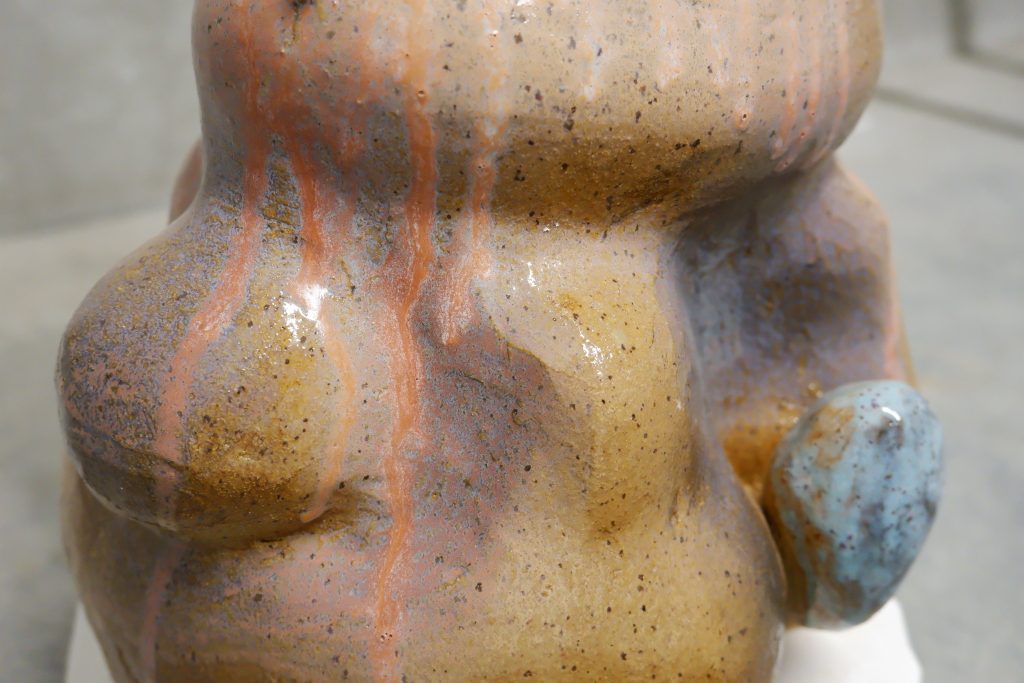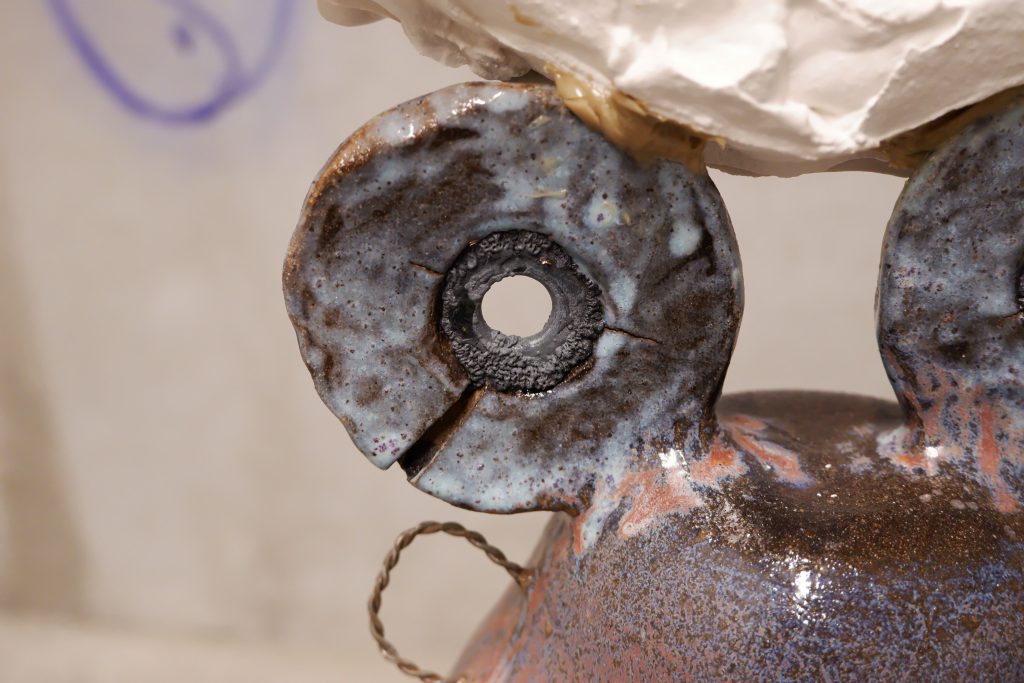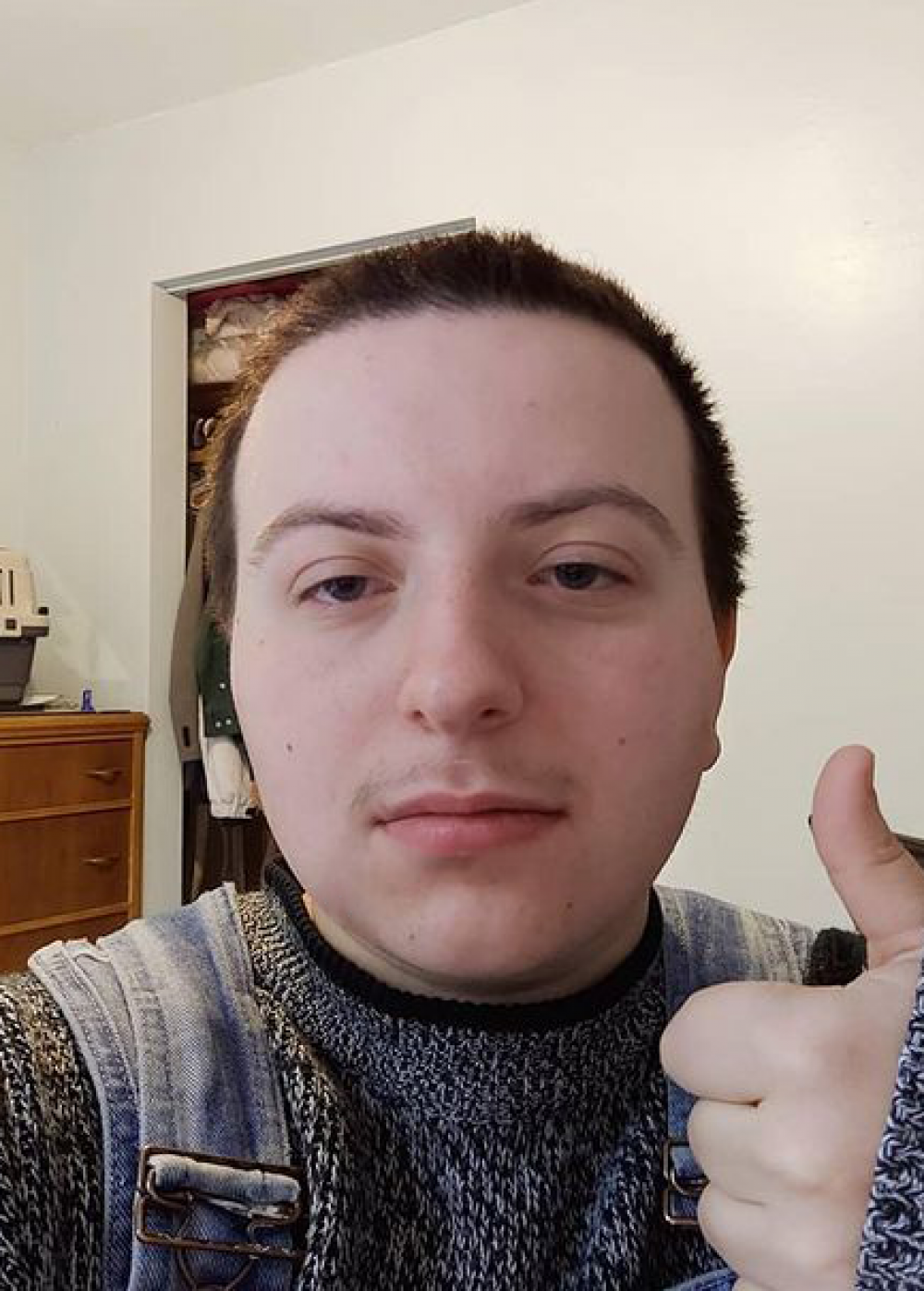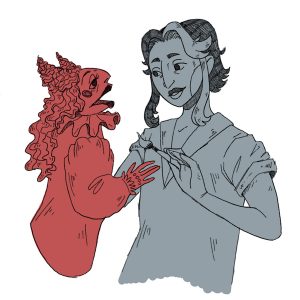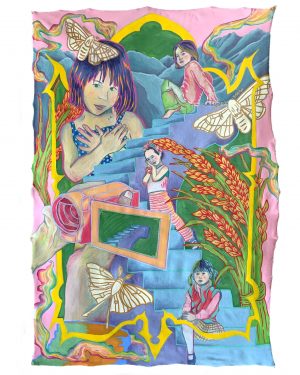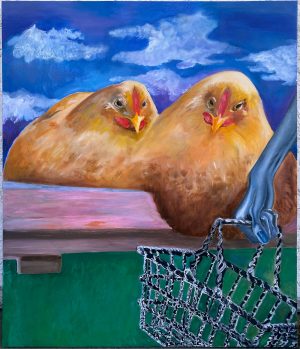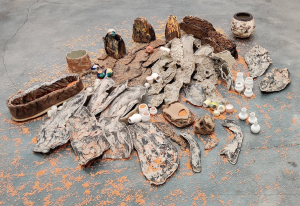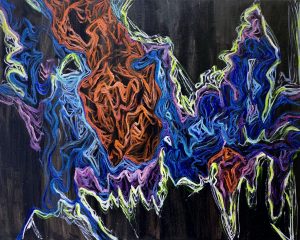in hindsight of the future
Mickey Vescera
in hindsight of the future is a series of five works (p-worm, e-worm, horseshoe, termite, and louse) that monumentalize oft-ignored nonhuman animals engaging in symbiotic relationships. The pieces are made from a mix of ceramics, scrap metal, plaster, tinfoil, and industrial foam. Forms are abstracted from the digestive, reproductive, and nervous systems of insects and arthropods. Aesthetically, in hindsight of the future references classic sci-fi and retrofuturism. Sci-fi media often tries to predict what will be important and normal for future societies. These choices reflect the dominant culture of the creators and their hopes and fears. For example, Star Trek’s United Federation of Planets communicates almost exclusively in American English, and Shakespeare is so well known he can be quoted by crew members offhand – despite dying almost 600 years prior (what can you remember from six centuries ago?). in hindsight of the future imagines what a sci-fi world could look like if our environment and the nonhuman animals we live with were deemed as important. Dedications to some of the many symbiotic relationships found in nature, and how they are capable of thriving alongside humanity.
e-worm
ceramic, plaster, metal, industrial foam
e-worm…is the digestive system of a worm. The eating habits and digestion of worms play a huge role in the microbial biodiversity of their habitats, not to mention the symbiotic bacteria within the worms’ digestive tracts. There are at least 15 reported genuses of bacteria inside worm intestines, divided into four categories: plant growth promoters, free-living nitrogen fixers, biocides, and phosphate solubilizers. Worms are the engineers of their soil, and can either inhibit, stimulate, or neutralize the microbiomes around them.
horseshoe
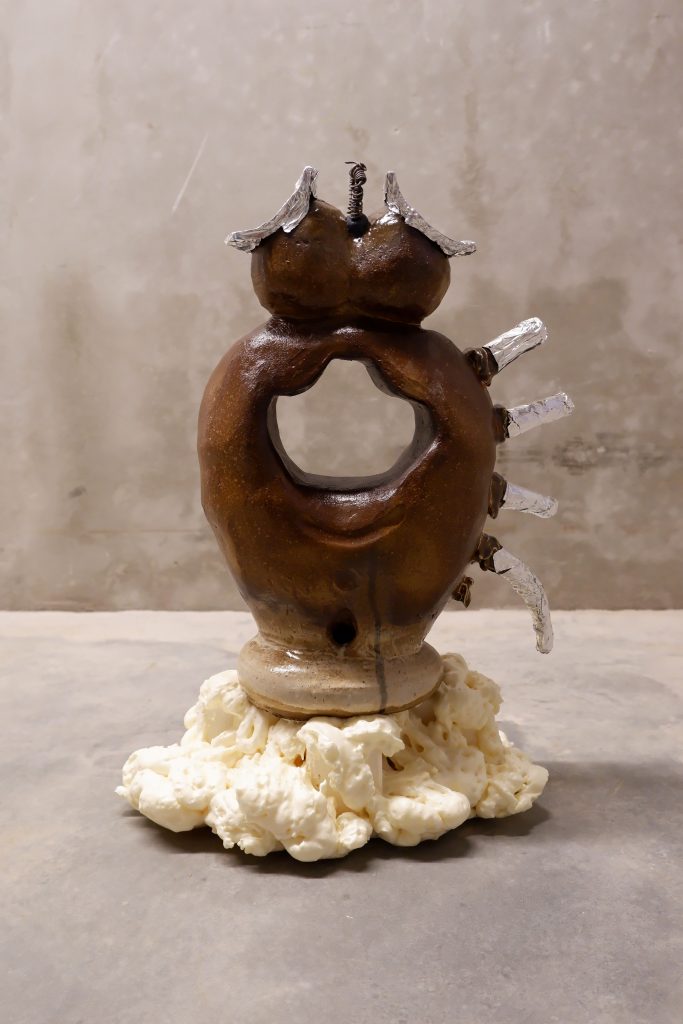
ceramic, industrial foam, metal, aluminum foil
horseshoe…is the nervous system of a horseshoe crab. This piece was inspired by the essay “Synchronies at Risk” by Peter Funch. Every spring on the United States east coast, horseshoe crabs crawl onto beaches and lay billions of eggs in the sand. The large number of eggs would guarantee food for red knot birds, who rely on those eggs to fuel them during their spring migration from South America to the Canadian Arctic. However, due to the decline in horseshoe crab populations from habitat loss and intensive harvesting, the red knot birds no longer have a stable food source to fuel their long journey. This is an example of symbiosis and species’ reliance on each other. Without the support of horseshoe crabs, red knot bird populations dwindle, and this echoes through all species affected by those birds.
louse
ceramic, metal, plaster, plastic
louse…is a sea louse. It was inspired by the essay “Unruly Appetites” by Marianna Elisabeth Lien. Sea lice are a plague on farm salmon, and in Sweden, the fish wrasse have been introduced to pens to eat the lice off the salmon. They also provide food for the salmon. This attempt to recreate the natural interactions of sea creatures in a pen inadvertently highlights the flaws of the farm system. The wrasse eat the sea lice, but oftentimes ignore them in favour of algae. Or, when the population is too high, they nibble on the salmon themselves. The pens have to be altered to accommodate the environmental needs of the wrasse, which include seaweed caverns to hide in. To emulate this, black garbage bags are cut into strips and hung off the sides of pens. The farms facilitate the desperate creation of simulacrae, expanding themselves into warped fantasies of the wild where interactions between species are driven by profit.
termite
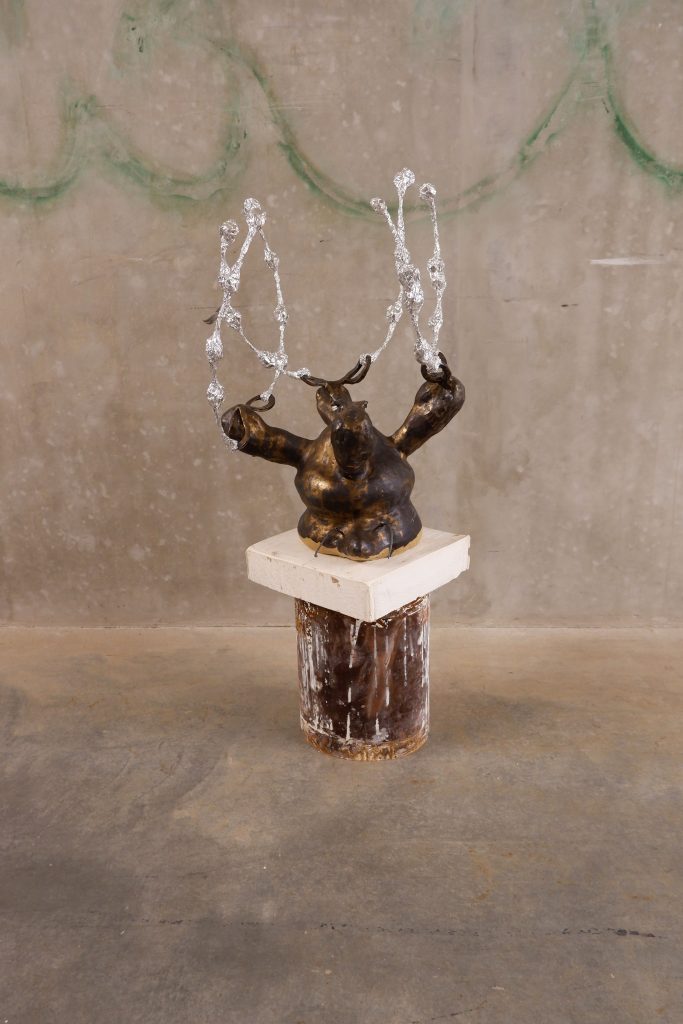
ceramic, plaster, metal, aluminum foil
termite…is the reproductive system of a queen termite. It was inspired by the essays “Holobiont by Birth” by Scott F. Gilbert, and “Silent Spring” by Rachel Carson. The reproductive system was chosen to reflect the effect of insecticides on reproductive functions. However the termite itself was chosen because of the symbiotic relationship within it’s digestive system. Mastotermes darwiniensis eats wood, but does not have a genome that allows it to digest wood. Inside the termite gut is a symbiotic protist, Mixotricha paradoxica, which digests the wood. M. paradoxica itself is a composite organism containing a protist and at least four other types of bacteria. The termite is a poster child for composite organisms, and the interconnectedness of species.
p-worm
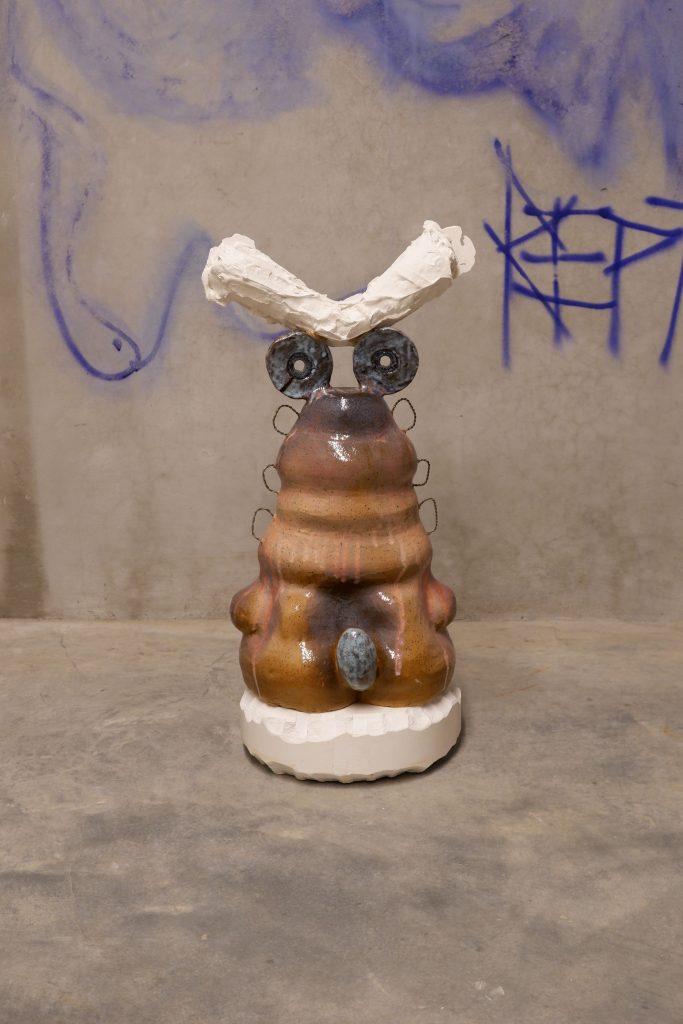
ceramic, metal, plaster
p-worm… is an abstraction of the reproductive system of a worm. It one of the most abstracted of the series, with the ovarian funnel and ovaries placed above the combination epidermis-testis sacs, and the spermatheca lining the sides. This piece was inspired by Rachel Carson’s essay “Silent Spring”. The worm is a harbourer of symbiotic bacteria, however not in it’s reproductive system. The reproductive system was chosen as a reflection of the documented effects of insecticides such as DDT on the reproductive systems of birds, one of the largest predators of insects such as worms. There is a line of destruction when one harms the perceived annoyances of the animal kingdom, one that results in the reproductive failure of multiple species.
